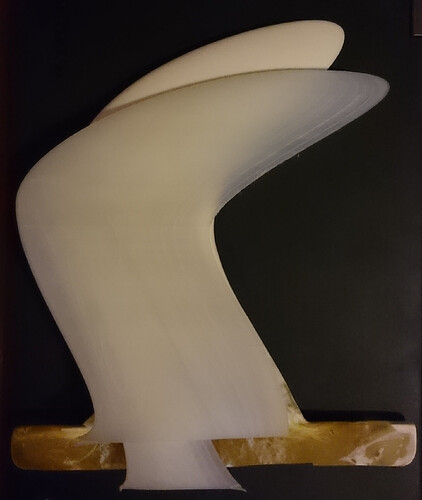Is it possible to share finFoil designs by pasting the content of the .foil files?
Like so: Paste the below text into a .foil file of your choice (using a text editor; delete the text in the file first), then open it with finFoil, and then you can export a .stl file of Peregrine-2-1 from finFoil :
{“foil”:{“history”:,“layerCount”:99,“minThick”:0.0008,“outline”:{“area”:0.025521525122632401,“height”:0.239,“path”:{“cont”:[1,1,1,1,0],“path”:[[“M”,0,0],[“C”,102.1889,-3.0638996,-55.18752278341772,-164.97659963954288,-57.346132897805802,-286.61571143622535],[“C”,-58.638777377356853,-359.45708529685305,65.269532922133948,-458.68164134386649,269.58587545020873,-459.86465382634515],[“C”,449.40044554849038,-460.90579854499913,126.05071218007468,-325.0239373557032,129.05361036609116,-255.49704441028189],[“C”,131.80759296001946,-191.73335975615427,230.45189604903194,-86.48778253830244,233.06277594394606,0]]},“sweep”:0.4239545453184384,“uuid”:“{1bc7c09f-94bf-4afd-bf63-021c92577817}”},“profile”:{“symmetry”:“Symmetric”,“thicknessRatio”:1,“topProfile”:{“cont”:[0,1,0],“path”:[[“M”,0,0],[“C”,1,-25,33.982875260170076,-89.778442780563779,113,-90],[“C”,167.25409087866217,-90.152123803007186,297,-1,412,0]]},“uuid”:“{ae4ca51a-c7a5-4990-a664-bf61cb7fac72}”},“thick”:0.02,“thickness”:{“topProfile”:{“cont”:[0,0],“path”:[[“M”,0,-40],[“C”,0,1,467,-42,467,0]]},“uuid”:“{35713a3e-6c8b-46d6-9340-1569934daa5f}”},“uuid”:“{3f0023fa-26ee-4ab8-a987-e4e244a07398}”}}















